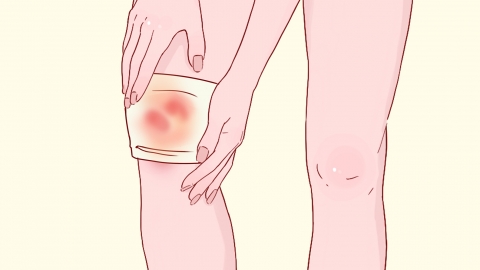Uncomfortable sensation in the right knee, can't quite describe what it feels like
Under normal circumstances, the main causes of discomfort in the right knee without a clear sensation include overexertion, knee joint exposure to cold, knee synovitis, patellar chondromalacia, meniscus injury, and others. If discomfort occurs, it is recommended to seek timely medical evaluation and treatment at a reputable hospital. Specific analyses are as follows:
1. Overexertion
Long-term walking, climbing stairs, or excessive exercise can cause repeated friction of the right knee cartilage and sustained muscle tension, leading to discomfort. Reduce weight-bearing activities on the knee joint, elevate the right leg during rest, soak feet in warm water to promote blood circulation, and avoid prolonged standing in daily life.
2. Knee Joint Exposure to Cold
When cold invades the right knee joint, it causes constriction of surrounding blood vessels, slows blood circulation, and reduces blood supply to soft tissues, resulting in discomfort. Promptly add clothing for warmth, apply a hot water bottle to warm the knee joint, and avoid staying in cold and damp environments for extended periods.

3. Knee Synovitis
After joint strain or trauma, the synovium becomes irritated and inflamed, causing increased synovial fluid secretion and joint effusion, which leads to feelings of heaviness, soreness, and swelling in the knee. Under medical guidance, medications such as celecoxib capsules, synovitis granules, or diclofenac sodium sustained-release tablets may be taken. Reduce joint activity; if necessary, joint aspiration may be performed to remove excess fluid.
Long-term wear and tear lead to degeneration and flaking of the patellar cartilage. During knee movement, cartilage friction causes dull pain and weakness, with symptoms worsening when climbing up or down stairs. Under medical supervision, medications such as glucosamine hydrochloride capsules, chondroitin sulfate sodium tablets, or ibuprofen sustained-release capsules may be used. Wearing a patellar stabilizer or brace is recommended, and squatting or kneeling movements should be avoided.
5. Meniscus Injury
Trauma involving twisting of the knee joint can cause meniscal tears. During joint movement, the torn area may be compressed, leading to dull pain, catching, or locking sensations. Under medical guidance, medications such as etoricoxib tablets, Huoxue Zhitong capsules (blood-activating and pain-relieving capsules), or eperisone hydrochloride tablets may be prescribed. In severe cases, arthroscopic meniscus repair surgery may be required. After surgery, strenuous physical activity should be avoided.
In daily life, control exercise intensity and avoid overusing the knee joints; keep knees warm to prevent cold exposure; choose comfortable footwear to reduce joint wear; strengthen quadriceps muscle exercises to improve joint stability; and undergo regular knee joint check-ups to detect abnormalities early.




